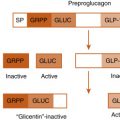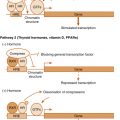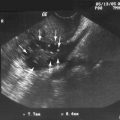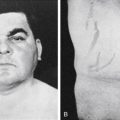- 1.
Which receptor resides in the cytoplasm in the absence of hormone?
- a.
Insulin receptor
- b.
Thyroid hormone receptor
- c.
Prolactin receptor
- d.
Glucocorticoid receptor
- a.
- 2.
One general mode of an intracellular signaling pathway involves:
- a.
Exocytosis of matrix molecules
- b.
Protein synthesis of a hormone receptor
- c.
Covalent phosphorylation of proteins or lipids
- d.
Replication of DNA
- a.
- 3.
G-protein-coupled receptors (GPCRs) function as ligand-activated:
- a.
Protein tyrosine kinases
- b.
G-protein exchange factors
- c.
Protein phosphatases
- d.
Membrane phospholipases
- a.
- 4.
GPCRs can be downregulated by:
- a.
Ligand-induced endocytosis
- b.
Transphosphorylation on tyrosine residues
- c.
Dimerization within the cell membrane
- d.
Activation of the Gs subunit
- a.
- 5.
The transcription factors called STATs are activated by which class of receptor?
- a.
Receptor tyrosine kinase
- b.
Steroid hormone receptor
- c.
GPCR
- d.
Cytokine receptor
- a.
- 6.
Which of the following is true concerning coactivator proteins?
- a.
They modify chromatin coiling
- b.
They reside in the cytoplasm
- c.
They increase protein translation
- d.
They directly bind to steroid hormones
- a.
- 7.
During the gastric phase, gastrin secretion is stimulated primarily by:
- a.
Histamine
- b.
Long-chain fatty acids
- c.
Somatostatin
- d.
Peptides
- a.
- 8.
Erythromycin can be used to treat delayed gastric emptying through acting as an agonist for:
- a.
Somatostatin
- b.
Motilin
- c.
CCK
- d.
GLP-1
- a.
- 9.
Zollinger-Ellison syndrome (gastrin-secreting tumor) directly causes the overgrowth of which cell type?
- a.
S (secretin) cell
- b.
Goblet cell
- c.
Pancreatic acinar cell
- d.
ECL cell
- a.
- 10.
The term incretin is used to describe a hormone that sensitizes:
- a.
G cells to stomach distention
- b.
Intestinal K cells to long-chain fatty acids
- c.
Pancreatic β cells to glucose
- d.
Intestinal L cells to glucose
- a.
- 11.
A 25-year-old patient was found to have abnormal overnight fasting blood values during a yearly physical examination. Genetic testing revealed the presence of a partial loss-of-function mutation in GLUT2 gene. The finding from the initial blood work that ultimately pointed to GLUT2 was:
- a.
High liver enzymes
- b.
Low cortisol
- c.
Elevated LDL
- d.
Elevated glucose
- a.
- 12.
During acute hypoglycemia, insulin secretion is inhibited by low glucose and:
- a.
Cholinergic signaling through the muscarinic receptor
- b.
Catecholamine signaling through the α 2 -adrenergic receptor
- c.
Glucagon signaling through the glucagon receptor
- d.
GLP-1 signaling through the GLP-1 receptor
- a.
- 13.
The insulin receptor regulates metabolism primarily through a signaling pathway involving:
- a.
Akt
- b.
cAMP
- c.
Ca 2+
- d.
Ras
- a.
- 14.
A primary and direct stimulus for glucagon secretion during the FAST state is:
- a.
Low blood sugar
- b.
Cholinergic innervation
- c.
Low insulin
- d.
Low blood free fatty acids
- a.
- 15.
Insulin suppresses glucose-6-phosphatase through:
- a.
Activation of SREBP-1
- b.
Activation of protein phosphatase-1
- c.
Inhibition of FOXO1
- d.
Activation of cAMP-PKA
- a.
- 16.
During the fed state, insulin activates which enzyme/transporter?
- a.
Adipose tissue lipoprotein lipase
- b.
Hepatic pyruvate carboxylase
- c.
Muscle glycogen phosphorylase
- d.
Hepatic GLUT2 transporter
- a.
- 17.
Quantitatively, insulin maintains glucose tolerance through:
- a.
Suppression of hepatic glycolysis
- b.
Increased GLUT4-mediated glucose uptake in muscle
- c.
Suppression of adipocyte hormone-sensitive lipase
- d.
Increased hepatic gluconeogenesis
- a.
- 18.
A heterozygous inactivating mutation in the CaSR results in:
- a.
Hypercalcemia
- b.
Low levels of 1,25-dihydroxyvitamin D 3
- c.
Elevated PTH levels
- d.
Hypophosphatemia
- a.
- 19.
One mechanism by which intermittent treatment with PTH improves bone density is through:
- a.
Stimulation of RANKL by osteoblasts
- b.
Induction of cell death of osteoclasts
- c.
Inhibiting secretion of SOST by osteocytes
- d.
Decreasing osteoprotegerin production by osteoblasts
- a.
- 20.
The sodium-phosphate cotransporter (NPT) isoform 2a is expressed in the proximal renal tubules. NPT2a is regulated in the following manner:
- a.
Increased by PTH
- b.
Increased by calciuria
- c.
Decreased by PTH
- d.
Decreased by 1,25-dihydroxyvitamin D
- a.
- 21.
The primary action of 1,25-dihydroxyvitamin D to increase serum Ca 2+ is to:
- a.
Stimulate of osteoblast RANKL production
- b.
Increase intestinal Ca 2+ absorption
- c.
Increase renal phosphate excretion
- d.
Stimulate PTH production
- a.
- 22.
The expression of renal 1α-hydroxylase is directly stimulated by:
- a.
FGF23
- b.
CaSR
- c.
PTH
- d.
High serum Ca 2+
- a.
- 23.
Damage to the pituitary stalk may result in an increase in:
- a.
FSH
- b.
GH
- c.
ACTH
- d.
PRL
- a.
- 24.
The pituitary cell that produces two hormones is the:
- a.
Thyrotrope
- b.
Gonadotrope
- c.
Corticotrope
- d.
Somatotrope
- a.
- 25.
Provasophysin in synthesized in magnocellular cells within the:
- a.
Anterior pituitary
- b.
Posterior pituitary
- c.
Hypothalamus
- d.
Infundibular stalk
- a.
- 26.
During a fast, GH secretion is stimulated by:
- a.
Insulin
- b.
Glucagon
- c.
Ghrelin
- d.
Somatostatin
- a.
- 27.
Tertiary hypercortisolism may result from:
- a.
Interleukin stimulation of CRH
- b.
A functional adrenocortical tumor
- c.
A functional pituitary corticotropic tumor
- d.
Genetic amplification of the POMC gene
- a.
- 28.
A gain-of-function mutation in the type 3 deiodinase may cause:
- a.
Elevated blood T 3 levels
- b.
Suppressed T 4 synthesis
- c.
Elevated iodine uptake curve
- d.
Suppressed TSH levels
- a.
- 29.
With respect to cardiovascular function, hyperthyroidism causes:
- a.
Increased inotropy and increased peripheral resistance
- b.
Increased inotropy and decreased peripheral resistance
- c.
Decreased inotropy and increased peripheral resistance
- d.
Decreased inotropy and decreased peripheral resistance
- a.
- 30.
Iodide is transported into the colloid by:
- a.
Sodium/iodide symporter (NIS)
- b.
Thyroid-specific iodotyrosine deiodinase
- c.
Thyroid peroxidase
- d.
Pendrin
- a.
- 31.
How would acute chemical inhibition of thyroid peroxidase affect the iodine uptake curve?
- a.
Decreased initial uptake, then plateau over 24 hr
- b.
Normal initial uptake, with loss of iodine within 24 hr
- c.
Increased initial uptake, with loss of iodine within 24 hr
- d.
Increased initial uptake, then plateau over 24 hr
- a.
- 32.
Maternal blood thyroid hormone levels in late pregnancy can be characterized as:
- a.
Elevated total T 4 , normal free T 4
- b.
Elevated total T 4 , elevated T 4
- c.
Normal total T 4 , normal T 4
- d.
Normal total T 4 , elevated T 4
- a.
- 33.
In an individual with iodine deficiency–induced goiter and signs of cold intolerance and a decreased heart rate, one would expect to find the following circulating hormone levels:
- a.
High TSH and high T 3
- b.
High TSH and low T 3
- c.
Low TSH and high T 3
- d.
Low TSH and low T 3
- a.
- 34.
In an individual with Graves disease–induced goiter and signs of heat intolerance and an elevated heart rate, one would expect to find the following circulating hormone levels:
- a.
High TSH and high T 3
- b.
High TSH and low T 3
- c.
Low TSH and high T 3
- d.
Low TSH and low T 3
- a.
- 35.
A thyroid hormone receptor not bound to T 3 is located:
- a.
In the cytoplasm
- b.
Within the plasma membrane
- c.
In the nucleus
- d.
Within the endoplasmic reticulum membrane
- a.
- 36.
During exercise, epinephrine and norepinephrine act to:
- a.
Increase muscle glycogenolysis
- b.
Increase hepatic glycolysis
- c.
Decrease adipocyte lipolysis
- d.
Decrease hepatic ketogenesis
- a.
- 37.
A clinical sign or symptom of adrenocortical insufficiency (Addison disease) is:
- a.
Puffy, flushed face (“moon face”)
- b.
Skin hyperpigmentation
- c.
Increased skin bruisability
- d.
Hyperglycemia
- a.
- 38.
A congenital null mutation of CYP11B1 would result in:
- a.
Sodium wasting
- b.
Hyperglycemia
- c.
Masculinization of a female fetus
- d.
Atrophy of adrenal cortex
- a.
- 39.
One treatment for hypertension is the use of aldosterone receptor antagonists (e.g., spironolactone). A side effect of this treatment can be:
- a.
Cardiac hypertrophy
- b.
Hyperkalemia
- c.
Metabolic alkalosis
- d.
Edema
- a.
- 40.
Glucocorticoid analogs are used at high levels to suppress inflammation. A side effect of this treatment can be:
- a.
Adrenocortical hypertrophy
- b.
Hypoglycemia
- c.
Skin darkening
- d.
Osteoporosis
- a.
- 41.
Cortisol is prevented from interacting with the mineralocorticoid receptor (MR) in the distal nephron through the action of:
- a.
Cortisol-binding protein
- b.
11β-hydroxysteroid dehydrogenase type 2
- c.
17β-hydroxysteroid dehydrogenase type 1
- d.
Serum and glucocorticoid-regulated kinase (SGK)
- a.
- 42.
Aldosterone resistance (type 1 pseudohypoaldosteronism) can be due to an inactivating mutation in:
- a.
Glucocorticoid receptor
- b.
Epithelial sodium channel (ENaC)
- c.
11β-hydroxysteroid dehydrogenase type 2
- d.
Aquaporin-2
- a.
- 43.
The basis for the generation of millions of genetically distinct gametes in a gonad is called:
- a.
Independent assortment
- b.
Genetic recombination
- c.
Disjunction
- d.
Euploidy
- a.
- 44.
Phenotypic gender is directly regulated by:
- a.
XX or XY sex chromosomes
- b.
Reproductive tract differentiation
- c.
Sex steroids
- d.
Gonadal differentiation
- a.
- 45.
The primary source of endogenous estradiol in a postmenopausal woman is the peripheral conversion of androgens made by:
- a.
The remaining few follicles
- b.
The ovarian stroma
- c.
The adrenal cortex
- d.
The adipose tissue
- a.
- 46.
Congenital deficiency of 5α-reductase type 2 may lead to the following in a male:
- a.
Ovarian differentiation of the gonad
- b.
Poorly developed seminal vesicle
- c.
Persistence of Müllerian duct derivatives
- d.
Poorly developed prostate gland
- a.
- 47.
A mutation that renders the FSH receptor constitutively active would result in:
- a.
Elevated blood testosterone levels
- b.
Low blood LH levels
- c.
Elevated blood inhibin levels
- d.
Low androgen–binding protein (ABP) in the seminiferous tubule
- a.
- 48.
Administration of an exogenous androgen can result in:
- a.
Elevated sperm production
- b.
Elevated blood LH levels
- c.
Elevated hematocrit (polycythemia)
- d.
Elevated proteolysis in muscle
- a.
- 49.
The Sertoli cell performs the following functions, except:
- a.
Regulates sperm development up to full motility
- b.
Expresses androgen-binding protein
- c.
Maintains blood-testis barrier
- d.
Expresses receptors for both FSH and testosterone
- a.
- 50.
Congenital deficiency of 17β-hydroxysteroid dehydrogenase (HSD) type 3 in a 46,XY individual would result in the following:
- a.
Lack of pubic hair in the adult
- b.
Breast development at puberty
- c.
Precocious penile and testicular growth at puberty
- d.
Development of oviducts and uterus
- a.
- 51.
DHT binds to the:
- a.
Estrogen receptor
- b.
DHT receptor
- c.
Androgen receptor
- d.
Prostate-specific antigen (PSA)
- a.
- 52.
Upregulation of penile cyclic GMP phosphodiesterase would result in the following within the vascular smooth muscle in the helicine arteries:
- a.
Increased tone
- b.
Increased nitric oxide levels
- c.
Increased intracellular Ca 2+
- d.
Increased cyclic GMP
- a.
- 53.
Emission refers to sperm moving into the:
- a.
Vas deferens
- b.
Spongy urethra
- c.
Epididymis
- d.
Prostatic urethra
- a.
- 54.
Testosterone has the following effect on the liver:
- a.
Upregulates LDL receptor
- b.
Increases VLDL production
- c.
Increases ApoA1 expression
- d.
Activates AMP kinase (AMPK)
- a.
- 55.
In the late follicular phase, the LH receptor is expressed on:
- a.
Theca cells only
- b.
Granulosa cells only
- c.
Theca and granulosa cells
- d.
Theca, granulosa cells, and the oocyte
- a.
- 56.
During the secretory phase of the uterus, progesterone induces:
- a.
Inactivation of estradiol to estrone
- b.
Proliferation of predecidual cells
- c.
Myometrial contractions
- d.
Release of matrix metalloproteases from stroma
- a.
- 57.
The ovarian reserve is a collective term for:
- a.
The number of preovulatory follicles
- b.
The number of primordial follicles
- c.
The ovarian stroma
- d.
The number of oogonia
- a.
- 58.
During her annual examination, a patient tells her gynecologist that she has noticed increased facial hair and acne. Ultrasound imaging of the ovaries reveals the presence of multiple “cysts,” and the diagnosis of polycystic ovary syndrome (PCOS) is made. The patient’s BMI is 32, indicating obesity. In this individual, the probable root cause of her PCOS is:
- a.
Elevated estradiol production
- b.
Hyperinsulinemia
- c.
Peripheral conversion of estrone to androgens
- d.
Elevated circulating FSH
- a.
- 59.
In the two-cell model of ovarian steroidogenesis, theca cells primarily produce:
- a.
Estradiol
- b.
Progesterone
- c.
Testosterone
- d.
Androstenedione
- a.
- 60.
A key factor in the selection of a dominant follicle is high expression of which receptor?
- a.
FSH receptor
- b.
Androgen receptor
- c.
LH receptor
- d.
Progesterone receptor
- a.
- 61.
During the early luteal phase, the following process occurs:
- a.
Increase in FSH secretion
- b.
Upregulation of CYP19-aromatase in granulosa cells
- c.
Meiotic completion and formation of the second polar body
- d.
Selection of a dominant follicle
- a.
- 62.
The steroidogenic pathway of the mature corpus luteum is characterized by very low expression of:
- a.
CYP19-aromatase
- b.
CYP17 (17-hydroxylase)
- c.
3β-Hydroxysteroid dehydrogenase (3β-HSD)
- d.
17β-Hydroxysteroid dehydrogenase (17β-HSD; activating isoform)
- a.
- 63.
The inability of the cumulus-oocyte complex to enter the female reproductive tract may be caused by an infection or inflammation of:
- a.
The isthmus of the oviduct
- b.
The ampulla of the oviduct
- c.
The intramural portion of the oviduct
- d.
The infundibulum of the oviduct
- a.
- 64.
The priming of the endometrium by estrogen refers to:
- a.
Development of vascular lacunae
- b.
Induction of progesterone receptors
- c.
Rapid proliferation of all cell types
- d.
Expression of pinopods by the surface epithelial cells
- a.
- 65.
The primary signal for the LH surge is:
- a.
Increased frequency of GnRH pulses by hypothalamic GnRH neurons
- b.
Decreased inhibin B production from both ovaries
- c.
Persistently high blood levels of estradiol from the dominant follicle
- d.
Rapid downregulation of the GnRH receptors on the gonadotropes
- a.
- 66.
Sperm undergo the process of capacitation as they:
- a.
Are stored in the tail of the epididymis
- b.
Become adhered to the oviduct
- c.
As they pass through the cervical mucus
- d.
In the vagina just after ejaculation
- a.
- 67.
An infertile couple undergo in vitro fertilization. Although the husband ejaculates several hundred million sperm, with greater than 50% normal phenotype, they fail to fertilize eggs retrieved from the wife’s ovaries after intracytoplasmic sperm injection. This observation suggests an insufficiency of:
- a.
Surface hyaluronidase (PH-20) expression
- b.
Binding to ZP3
- c.
PLCζ
- d.
Sperm hyperactivation
- a.
- 68.
The “window of receptivity” refers to:
- a.
The desire on the part of the woman to have sex
- b.
The adherent endometrium at midluteal phase
- c.
The duration of a viable cumulus-oocyte complex in the oviduct
- d.
The time of increased thickness of cervical mucus
- a.
- 69.
The primary function of the endometrial lacunae and associated vessels is to:
- a.
Capture hCG from the implanting embryo
- b.
Provide nutrition and oxygen to the implanting embryo
- c.
Deliver ovarian hormones to the implanting embryo
- d.
Induce the differentiation of syncytiotrophoblasts around the implanting embryo
- a.
- 70.
In humans, the placental barrier in the mature placenta includes the following cell types:
- a.
Syncytiotrophoblast, fetal endothelial cell
- b.
Maternal endothelial cell, syncytiotrophoblast, fetal endothelial cell
- c.
Syncytiotrophoblast, cytotrophoblast, fetal endothelial cell
- d.
Cytotrophoblast, fetal endothelial cell
- a.
- 71.
In a fetus carrying a null mutation in the gene encoding StAR protein, the following would be observed during the third trimester:
- a.
Maternal progesterone levels would be very low
- b.
Maternal estriol levels would be very low
- c.
Amniotic ACTH levels would be very low
- d.
Maternal cortisol levels would be very low
- a.
- 72.
In a fetus carrying a null mutation in the liver CYP3A7 gene encoding 16-hydroxylase, maternal blood would show an absence of:
- a.
Progesterone
- b.
Estradiol
- c.
Estriol
- d.
Estrone
- a.
- 73.
Transient gestational hyperthyroidism is due to:
- a.
Deficiency in the placental type 1 deiodinase
- b.
Induction of hypothalamic TRH by elevated levels of progesterone
- c.
Cross-reaction of hCG with the TSH receptor
- d.
Estradiol-induced hypertrophy and hyperplasia of thyroid epithelial cells
- a.
- 74.
Reversible vision problems may be experienced by some women during late pregnancy. This is due to an enlarged pituitary gland that presses on the optic nerves. Pituitary enlargement is caused by:
- a.
Estrogen-induction of lactotrope size and number
- b.
Progesterone-induced edema within the sella turcica
- c.
GnRH-induced growth of gonadotropes
- d.
hCG-induced growth of thyrotropes
- a.
- 75.
One factor that assists the mother in increasing her volume (for the umbilical circulation, growing fetus, and enlarging amniotic sac) is:
- a.
Progesterone inhibition of antinatriuretic factor (ANF)
- b.
hCG inhibition of ADH
- c.
Estrogen induction of liver angiotensinogen
- d.
Increased threshold for thirst
- a.
- 76.
Lactational amenorrhea is similar to clinical amenorrhea and infertility due to:
- a.
Elevated ovarian androgens
- b.
Hyperprolactinemia
- c.
An oxytocin-producing tumor
- d.
Cessation of GnRH neuronal pulsatility
- a.
- 77.
Tamoxifen is used to treat invasive breast cancer (after surgery and radiation). The mechanism of tamoxifen’s action is:
- a.
Inhibition of CYP19-aromatase
- b.
Competitive inhibition of the progesterone receptor
- c.
Increased inactivation of circulating estradiol
- d.
Competitive inhibition of the estrogen receptor
- a.
- 78.
Maternal cortisol levels increase during pregnancy and contribute to:
- a.
Increased prolactin production by the pituitary gland
- b.
Increased maternal tidal volume
- c.
Increased maternal insulin levels
- d.
Increased production of cortisol-binding protein by the liver
- a.
- 79.
Fetal cortisol rises significantly just before term. This is due to a positive feedback between cortisol and placental:
- a.
CRH
- b.
Progesterone
- c.
Estrogen
- d.
hPL
- a.
- 80.
Extravillous cytotrophoblasts perform the following function during the first trimester:
- a.
Induction of decidual cells to form the basal plate
- b.
Phagocytosis of dead cells
- c.
Conversion of spiral arteries
- d.
Formation of a layer of the amniodecidual membrane
- a.
Answers to Comprehensive Multiple-Choice Examination
| 1. d | 17. b | 33. b | 49. a | 65. c |
| 2. c | 18. a | 34. c | 50. b | 66. b |
| 3. b | 19. c | 35. c | 51. c | 67. c |
| 4. a | 20. c | 36. a | 52. a | 68. b |
| 5. d | 21. b | 37. b | 53. d | 69. a |
| 6. a | 22. c | 38. c | 54. b | 70. a |
| 7. d | 23. d | 39. b | 55. c | 71. b |
| 8. b | 24. b | 40. d | 56. a | 72. c |
| 9. d | 25. c | 41. b | 57. b | 73. c |
| 10. c | 26. c | 42. b | 58. b | 74. a |
| 11. d | 27. a | 43. a | 59. d | 75. c |
| 12. b | 28. c | 44. c | 60. a | 76. b |
| 13. a | 29. c | 45. c | 61. c | 77. d |
| 14. c | 30. d | 46. c | 62. b | 78. c |
| 15. c | 31. b | 47. c | 63. d | 79. a |
| 16. a | 32. a | 48. c | 64. b | 80. c |
Stay updated, free articles. Join our Telegram channel

Full access? Get Clinical Tree








